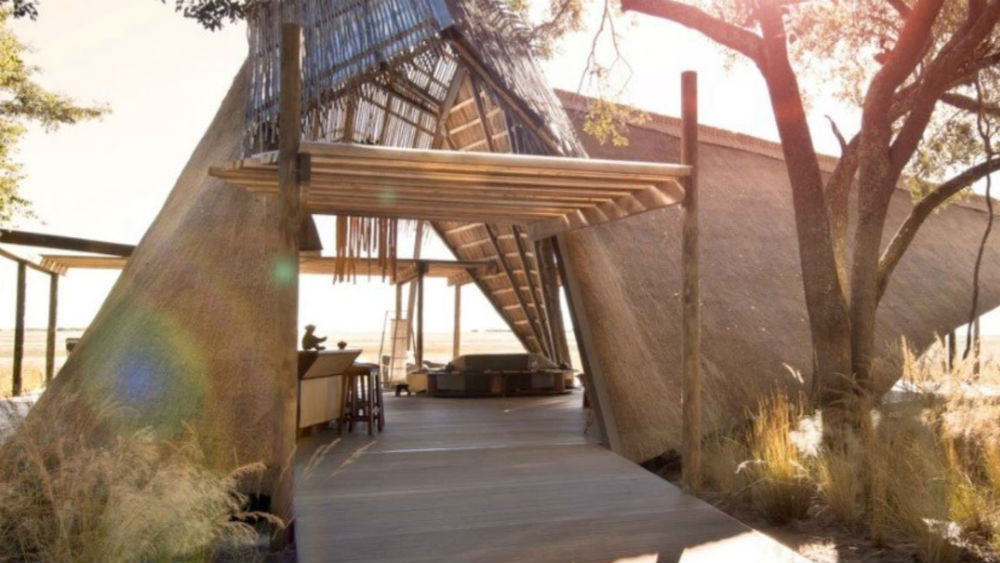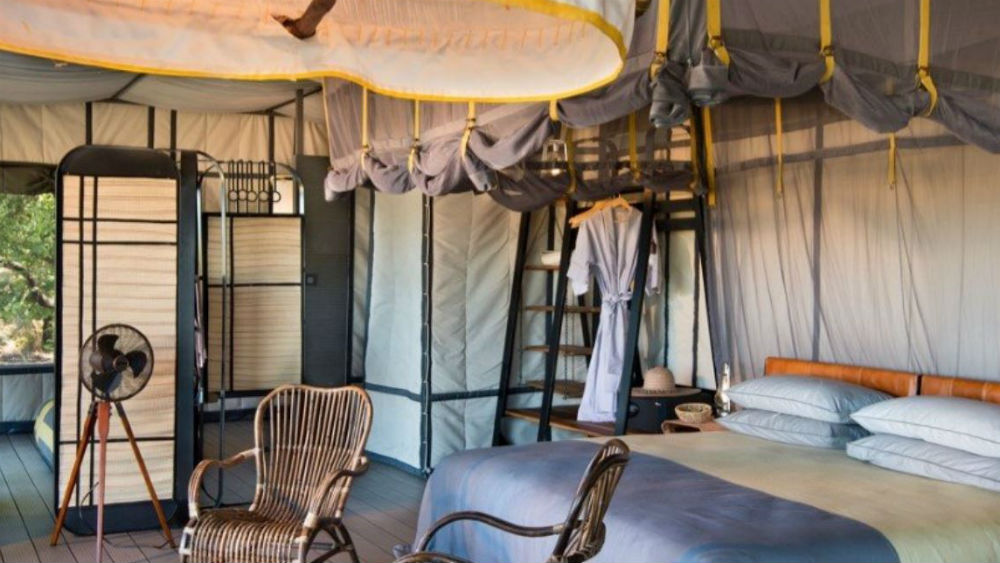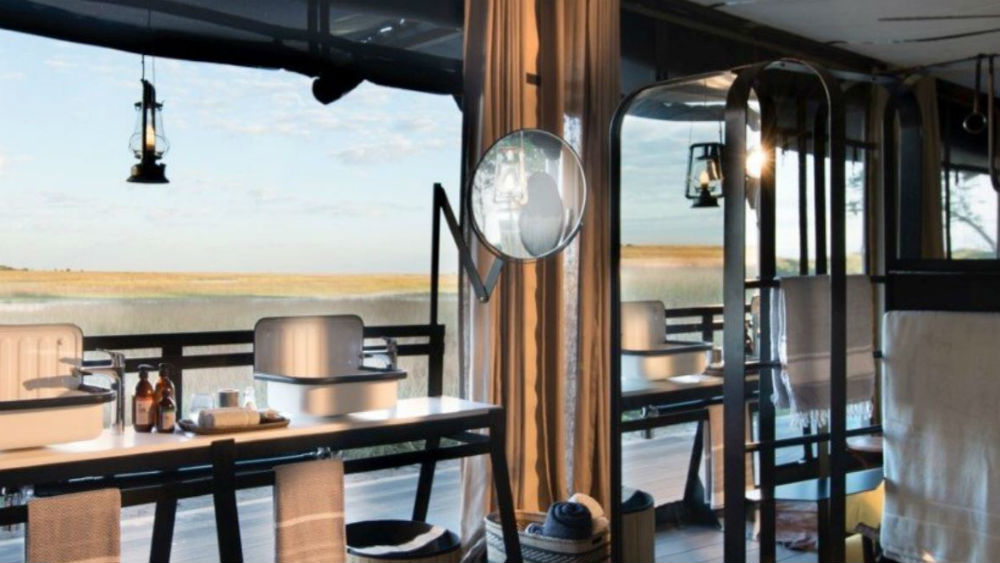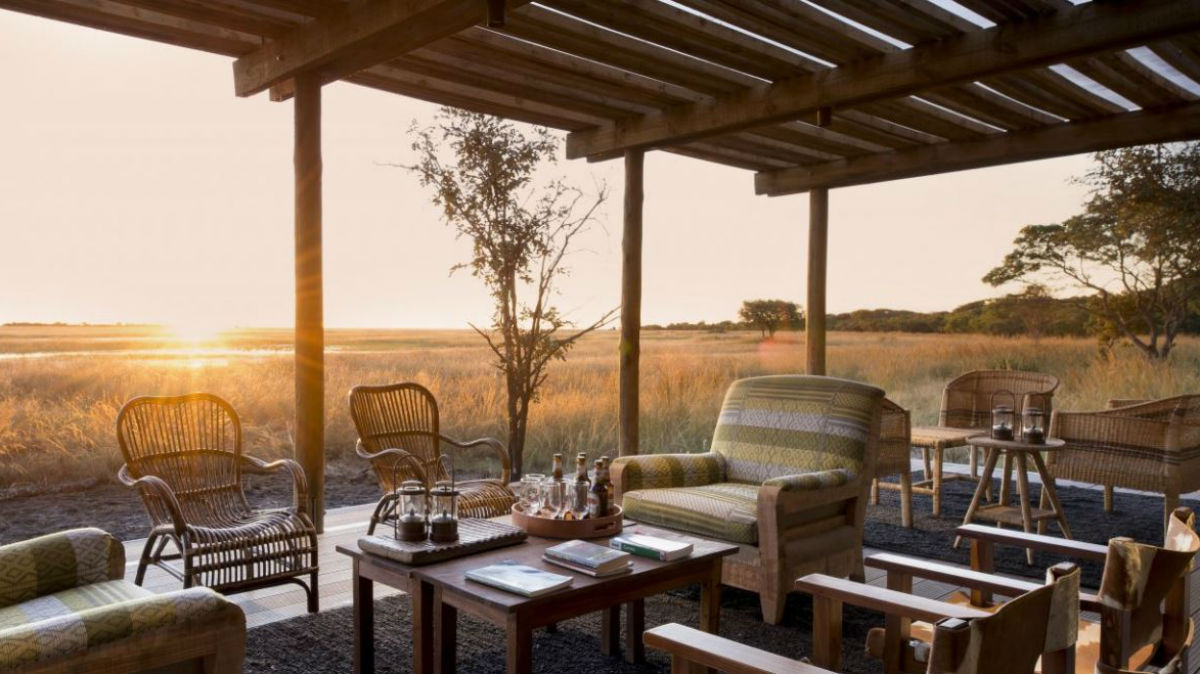Nowhere in the world does glamping better than the beautiful safari lodges of Africa. Throw a stone in any safari-friendly country on the continent, and you’re likely to hit such a lodge in the middle of the savannah. Zambia’s brand new King Lewanika Lodge is no exception.
Tucked into the remote western corner of Zambia near the border with Angola, Liuwa Plain National Park is among the oldest conservation success stories in Africa. The park’s history dates back to the 1880s when King Lewanika of the Lozi tribe established it as an officially protected area. In the century that followed, the park remained largely untouched and inaccessible.
Fast-forward to 2017. Luxury travel provider Time + Tide Africa recently unveiled the King Lewanika Lodge as the first and only permanent accommodation inside Liuwa Plain National Park. The exclusive encampment is a thoroughly eco-conscious endeavor that works in partnership with African Parks (the official non-profit conservation outfit that manages the national park) and the Zambian Department of National Parks.
Each of the six villas is a reflection of the lodge’s focus on what’s outside rather than on over-the-top luxuries. Johannesburg-based architects Lesley Carstens and Silvio Rech eschewed many of the “bigger-is-better” in-room luxuries and vaguely Hemingway-esque designs found in most modern lodges. Instead, the duo took inspiration from vintage military and safari encampments with simple metal furnishings, canvas walls, and minimal decor. Leather and canvas abound. Rather than feeling industrial and austere, however, they’ve captured an upscale simplicity that still feels luxurious.
Once raised, the canvas walls found throughout the property provide total immersion into the wild landscape outside. Panoramic views of Zambia’s savannah are available from every corner of the property. In this way, guests can feel not as outsiders looking in, but like they are a part of the landscape. And what a landscape it is. Liuwa Plain National Park is home to Africa’s second largest wildebeest migration. Guests will also discover unique experiences here that can be found nowhere else on the continent. This includes spotting rare, endangered birds and unusual wildlife behavior such as hyenas hunting their prey in packs of up to 50. The park’s remote location also ensures near-total privacy away from the usual safari crowds. With limited Wi-Fi and no cell towers, this is one place to truly disconnect.
King Lewanika Lodge is open each year from January through July, then again from October through December. Nightly rates start at $1,070 per person.
Images courtesy of King Lewanika Lodge.







